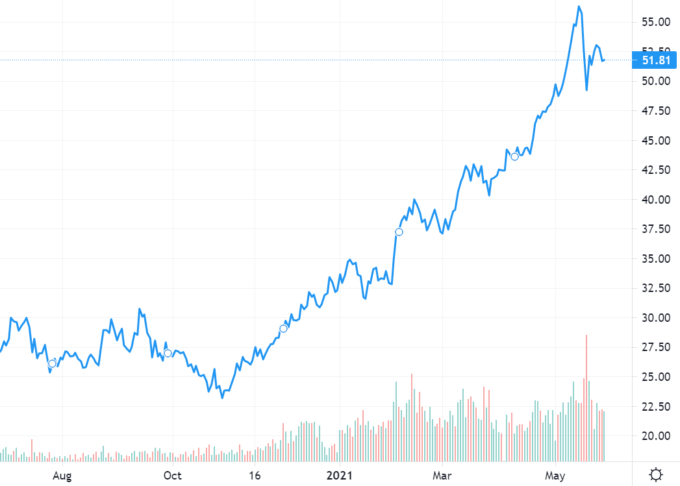When co-legislation meets adult EU ETS Reform and baby CBAM together: navigating the ultimate risk of climate change negotiations

The dawn of a new era
All EU ETS reform scenarios suggest we are about to see a fundamental break from the past. The price of CO2 is set to hit a historic high, while new sectors will have their own parallel cap-and-trade systems. Meanwhile, the linkage to the UK ETS system, currently in limbo, will have its own political weight. The cap-and-trade parameters that govern the market-based system will be extensively reworked, and new instruments/funding mechanisms (i.e. Carbon Contracts-for-Difference) may well emerge when the European Commission unveils its proposal next July. The new era of carbon is on the horizon.
Too Ambitious?
This massive realignment in European carbon markets is being driven by a technical and policy complexity that suggests too many ambitious goals are being pursued simultaneously. There is the recalibration of the parameters of the system (Linear Reduction Factor, Market Stability Reserve, etc) in line with new 2030 climate goals as well as the launch of a manageable and effective extension to the maritime, road transport and heating sectors (in coordination with existing EU regulation). There is also the redefinition of the existing carbon leakage regime and the alleviation of unintended distributional impacts that such reforms may impose on some of the most vulnerable segments of European society. In addition, reform will take place against a backdrop of the uncertainties of a post-pandemic world and its as-yet-unknown economic impact.
The technical complexity of designing such a reform will also need to align with the heavily trailed Carbon Border Adjustment Mechanism (CBAM). This alignment may take the form of a parallel certification system for third countries, potentially mirroring the functioning of the EU ETS (known as a ‘notional’ ETS). The consequences of the coexistence of this heavily restructured EU ETS, alongside what we could describe as a ‘baby’ CBAM, will be hard to predict; furthermore, it will be extremely difficult to depoliticise. This is because any type of CBAM will inevitably open a new era of carbon compliance between the EU and its major partners and carbon leakage protection for EU industries under ETS. It will create new dynamics between international trade rules (under WTO) and international climate policies.
Such layers of complexity between the new cap-and-trade system (which is now an ‘adult’ after 15 years!) and, its ‘baby’ cousin, the CBAM, will first need to undergo the co-legislation process – led by the European Parliament and Council – before any final text is approved.
Six steps to complexity
Here are six reasons why EU’s co-legislation process will inevitably introduce greater complexity and risks into the holistic design of these two pieces of legislation:
1) A lack of hierarchy among the files: While the EU ETS Reform and CBAM will be closely interlinked, the former should define and govern the latter. CBAM is a product of the EU ETS and is ultimately an unprecedented attempt to provide carbon leakage protection via routes that do not involve free allowances in a high-price CO2 era. Any ambiguity over the hierarchy could lead to both files being isolated or – worse still – see EU ETS reform adapted to accommodate the CBAM.
2) Polarising and oversimplifying the debate: There is a risk in setting an agenda that strongly polarises political groups and positions between the European Parliament and Council. Such conflicts could lie in issues such as whether (or not) to phase out free allowances, whether to expand the list of sectors under CBAM to the maximum number possible, and whether to extend EU ETS sectors. Polarising the debate over one or two ‘simple’ issues risks creating delays and huge political clashes during the process.
3) Acute volatility in the carbon price during negotiations: The recent sharp rise in the carbon price (see chart below) may be partially justified by the high expectations of a tightening of the EU ETS. However, the political reading of EU ETS market participants during co-legislation is likely to increase volatility in carbon prices. Such volatility will inevitably influence the amendment process, the negotiations between political groups and co-legislators and the final designs of both the EU ETS (re-calibration) and the CBAM (synchronisation of CO2 price levels for third party certifications).

Source: Carbon Price Viewer – Ember (ember-climate.org)
4) Inconsistent trade-offs: There is the potential for a record number of amendments, and the resulting fragmented approach between the EP and Council could add complexity to negotiations and make mixing provisions for the EU ETS and CBAM more likely. The extension of the EU ETS scope cannot, for example, be compromised by the expansion or reduction of free allowances with a particular CBAM regime. However, with so many policy options, significant compromises could derail the consistency of the EU ETS reform and ultimately weaken the effectiveness of the CBAM overall.
5) Major political red lines and pushback: A major red line for co-legislators could significantly compromise the ambition of EU ETS reform and the effectiveness of the CBAM. For example, the European Parliament or Council could decide not to support (or choose to heavily dilute) elements of the Commission proposal. What if the Parliament and Council will not support extending the EU ETS to road transport and heating? This may have a crucial impact on CBAM, even if these two sectors are not involved in such a debate.
6) EU ETS Reform will be reviewed but… will CBAM survive the co-legislation process? Co-legislation has never been a ‘kill the bill’ process; most legislative proposals do become law, unlike in the US. That, however, does not exclude the possibility of a heavily diluted proposal or unforeseen delays. Here, the CBAM is racing against the clock. Delays (until after 2024) will create further technical and political challenges on the way to align ETS and CBAM functioning for the rest of the decade.
All in all, co-legislation will take the EU ETS reform and CBAM to a new level of political complexity. The political and legislative process itself will create its own new dynamic, rich in unexpected policy risks. All the actors involved, including decision makers, companies and NGOs, should be prepared to understand that this is only the first in a series of highly complex, contradictory and politicised climate law negotiations. There will undoubtedly, inevitably, be more – watch this space.
-

As a public affairs and communications expert, Máximo supports clients on energy, climate and transport policy, leading the office’s Energy, Climate and Mobility team. With more than 18 years of experience, he also provides expertise in industrial and competitiveness policy and leads sustainability programmes. Before...
Find Out More
-
Why the EU can’t risk failure at COP27
November 4, 2022


